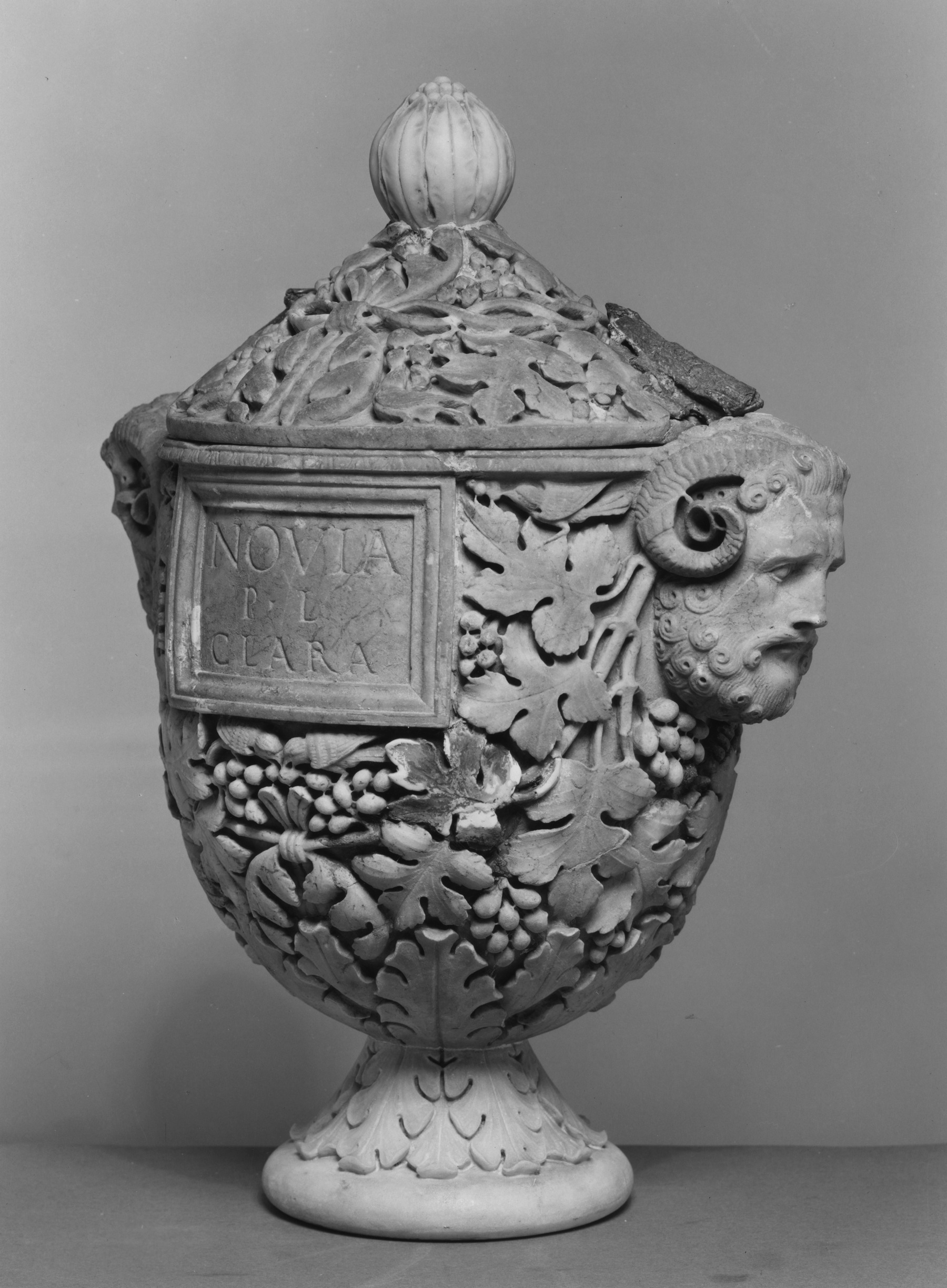Urn with Lid
(Roman Empire )
The name of the deceased, Novia Clara, appears on the front of this urn. The two handles are each in the form of a mask of Zeus-Ammon, the Hellenistic version of the powerful Egyptian god Amen, whose ram-horns curl around his ears. The lid preserves the lead clamps used to secure it to the vase. (The base and the finial are restored.)
Inscription
Provenance
Provenance (from the French provenir, 'to come from/forth') is the chronology of the ownership, custody, or location of a historical object. Learn more about provenance at the Walters.
Kalebjian Freres, Paris, [date and mode of acquisition unknown]; Joseph Brummer, New York and Paris, 1925, by purchase [Brummer inv. no. P2187]; Henry Walters, Baltimore, 1925, by purchase; Walters Art Museum, 1931, by bequest.
Conservation
| Date | Description | Narrative |
|---|---|---|
| Technical Report | examined for technical study | |
| 6/26/1961 | Treatment | cleaned |
| 7/20/1970 | Treatment | cleaned |
| 6/27/1973 | Treatment | cleaned; repaired |
| 6/27/1973 | Treatment | repaired; cleaned |
| 10/5/1995 | Treatment | stabilized; repaired |
| 10/5/1995 | Treatment | other |
| 5/29/2001 | Treatment | cleaned; loss compensation |
| 6/10/2011 | Treatment | other |
| 6/10/2011 | Treatment | This is 2nd c. A.D. carved marble funerary urn was made for a Roman lady named Novia Clara. The urn is empty; no ashes or contents remain. The urn was heavily restored in the past, prior to acquisition by Henry Walters in 1903. The base or foot of the urn is a carved marble restoration. The marble knop on the lid is a restoration but it appears to be from another marble vessel. The surviving Roman fragments were assembled using metal staples or cramps, work which was probably done in the 19th century. The old structural repairs, while employing methods and materials we would not choose today, remain stable and do not require redoing. The surface was cleaned in 1961 and again in 2001. In 2001, fills and inpainting of losses on the surface were redone using reversible, conservation-quality acrylic materials. |
Geographies
Italy, Rome (Place of Origin)
Measurements
Diam: 10 5/8 x H: 20 1/4 x W: 14 7/8 in. (27 x 51.5 x 37.8 cm)
Credit Line
Acquired by Henry Walters, 1925
Location in Museum
Accession Number
In libraries, galleries, museums, and archives, an accession number is a unique identifier assigned to each object in the collection.
In libraries, galleries, museums, and archives, an accession number is a unique identifier assigned to each object in the collection.
23.180


